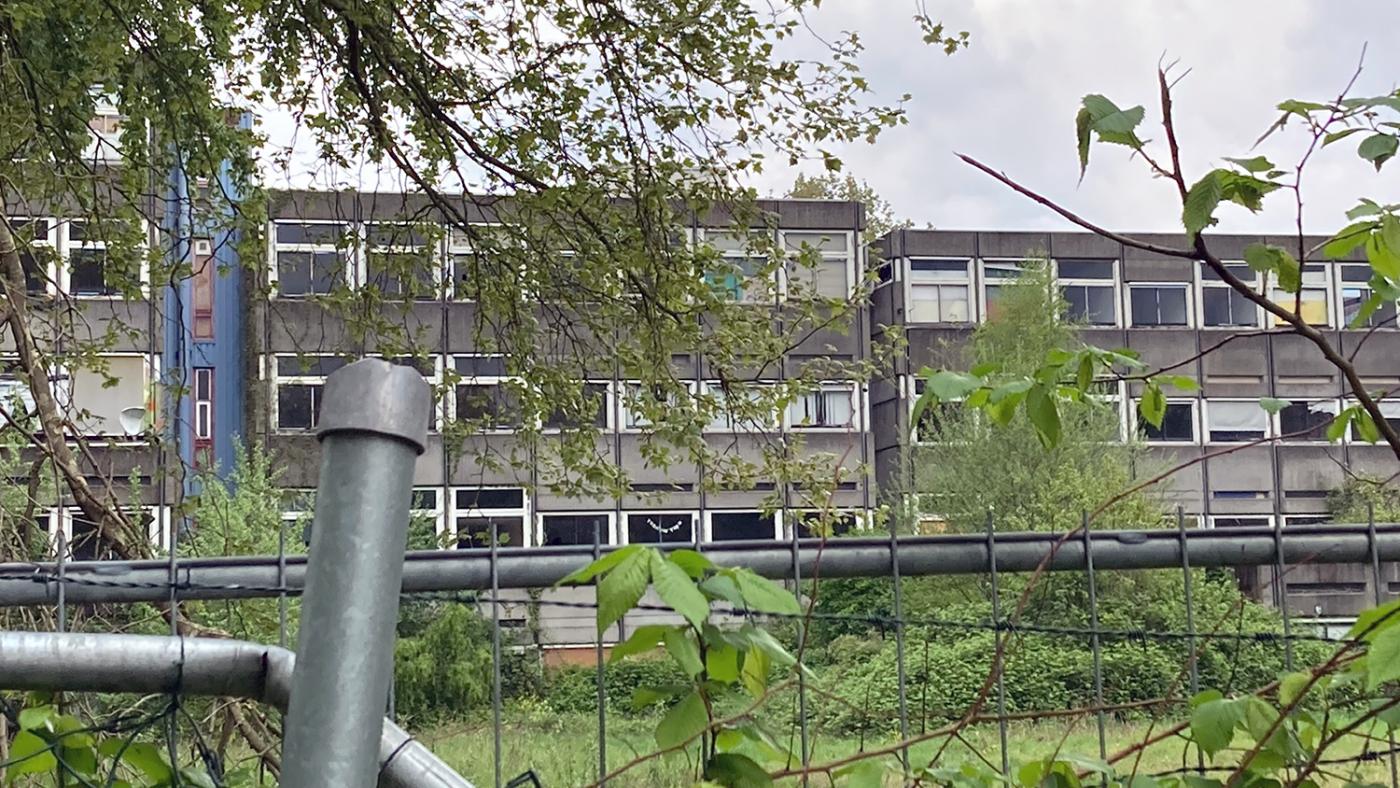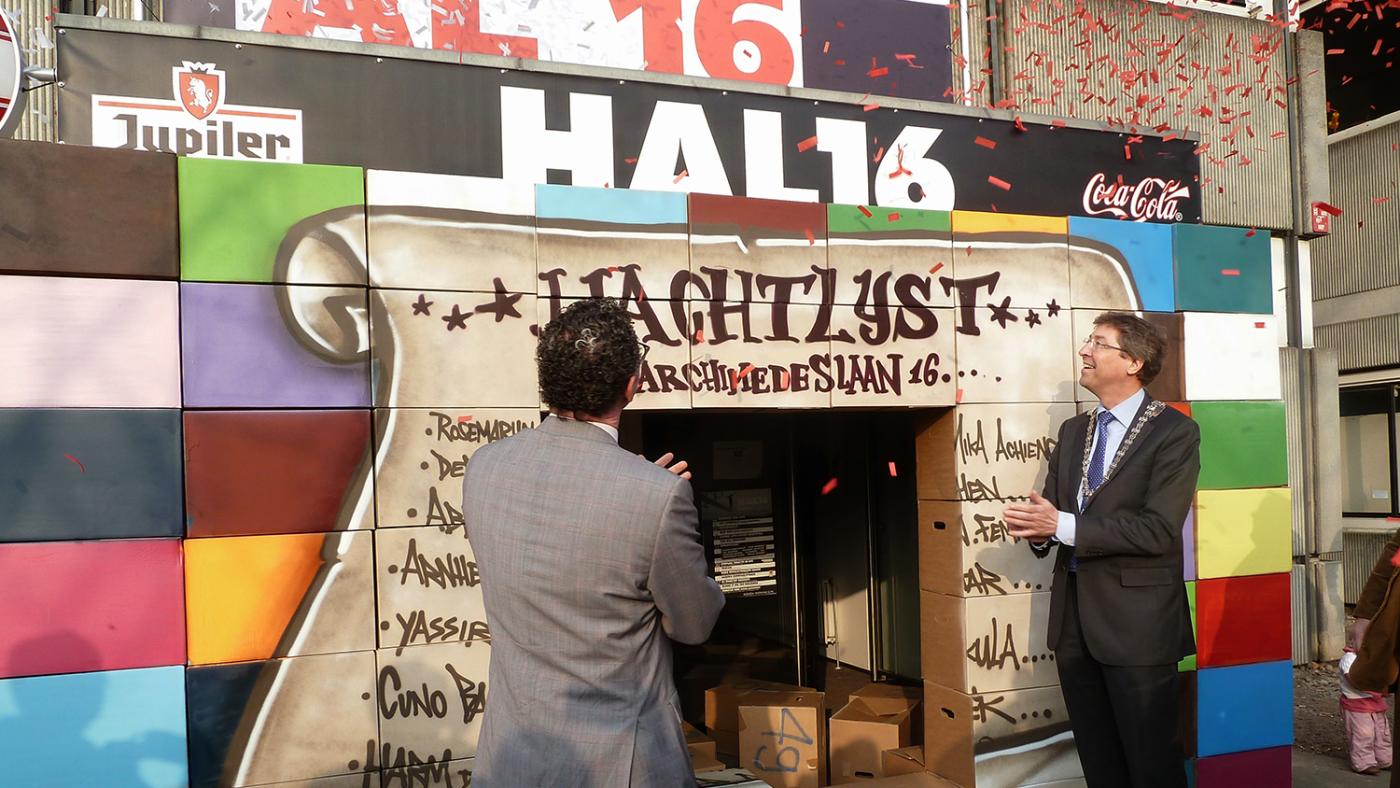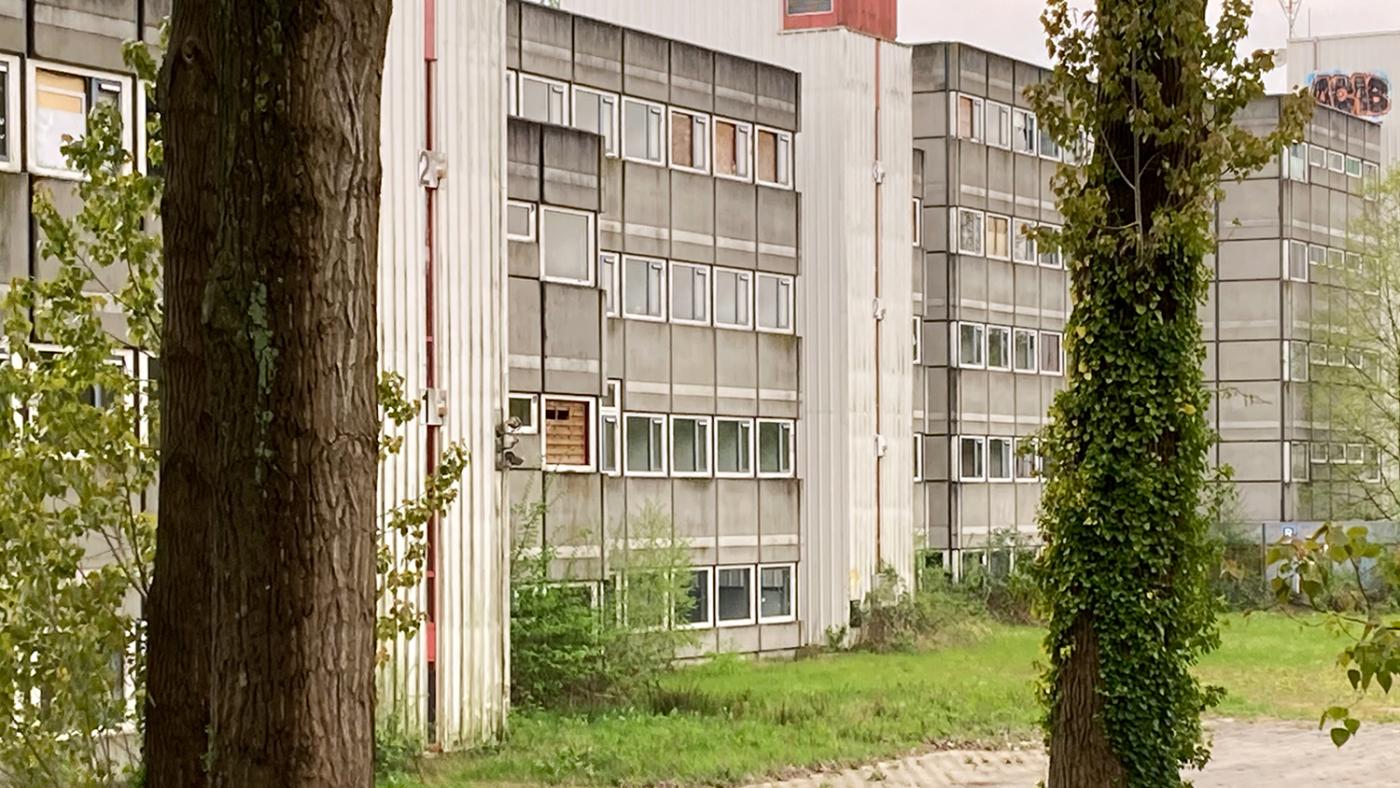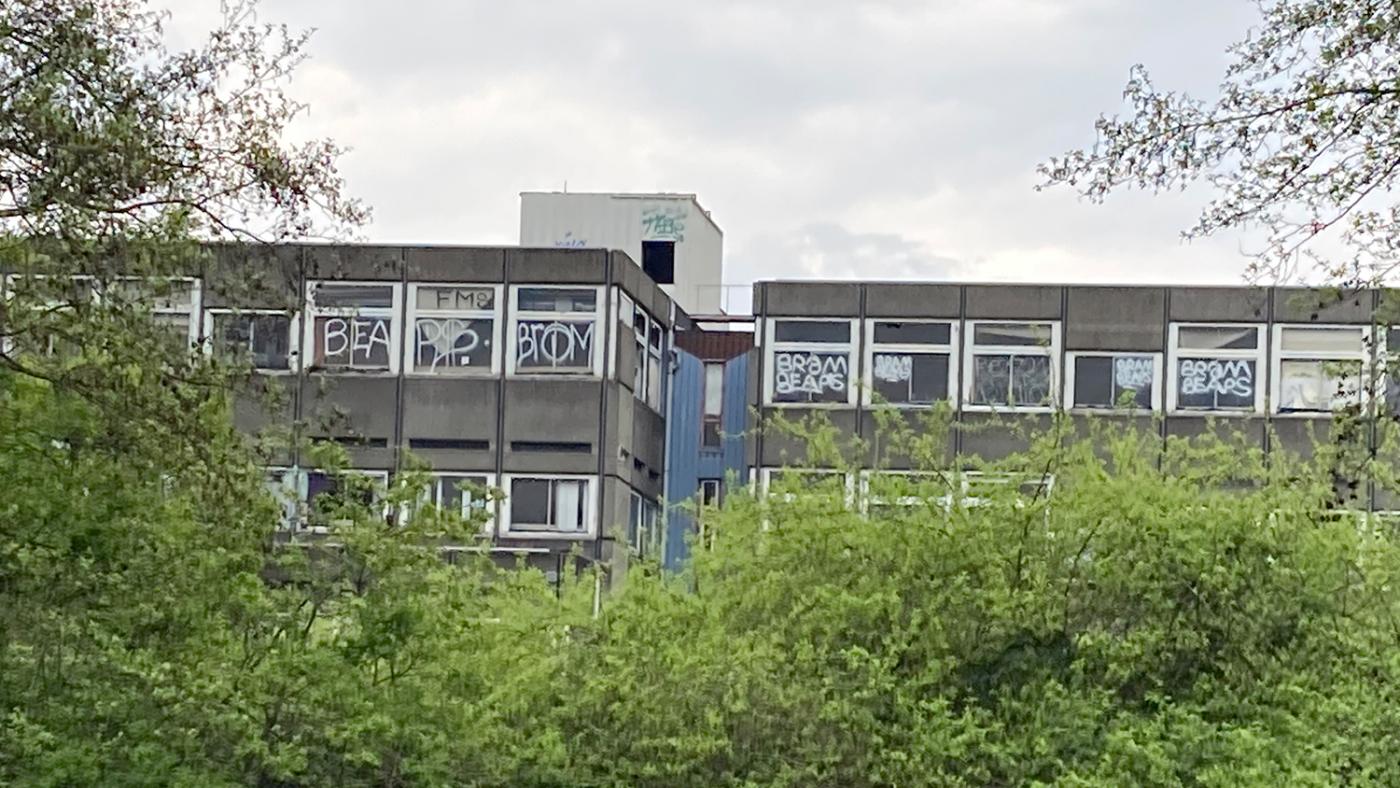No new houses as long as there is a problem with nitrogen
Archimedeslaan 16: looks like a never ending story

Behind two rows of rusty fencing stands a building of 16 linked concrete boxes. The shell is untouched, but where there used to be windows there are now holes, covered here and there with sheets of rain-damaged cardboard. The courtyard is overgrown and littered with rubbish. The last reminder of its former inhabitants is the faded sign at the entrance: 'Temporary Housing Foundation'.
The concrete complex at Archimedeslaan 16, on the border with the Utrecht Science Park, was one of the first to be built in the Rijnsweerdpolder in the 1970s. It housed the bacherlor’s programme of what is now the Utrecht University of Applied Sciences. It housed 3,000 students and staff. When HU moved its courses to the Utrecht Science Park in 2008, the complex was converted by Stichting Tijdelijk Wonen in 2012 into a mix of youth housing and cultural facilities. In exchange for a rent reduction, the new residents helped with odd jobs. They painted colourful graffiti and murals on the walls and ceilings. The Hal16 club also moved in.

The new centre
In 2015, initial plans were drawn up for the demolition of the buildings and the construction of 2,000 to 2,500 homes for students and others. Three years later, Stichting Kantorenpark Rijnsweerd and the municipality of Utrecht drew up a non-binding 'ambition document' for the area. This collected wishes and intentions for a new vision for the area.
The plan was to provide housing for more than only students and to turn the Archimedeslaan into a 'red carpet': 'a majestic avenue that will soon form the backbone of the residential area'. The river the Kromme Rijn, now hidden under Archimedeslaan, would become 'the new heart of the area' and, not insignificantly, there would be a large supermarket.
Momentum was building. In 2019, the last students left the complex, and in the same year, developers KondorWessels were supposed to start demolition. But things turned out differently.

Nitrogen and highway A27
The Rijnsweerd junction, where the A27 and A28 motorways meet, runs right past Archimedeslaan and, in addition to plans to build houses here, there are also plans to widen the A27 and redesign the junction. There would be quieter asphalt and a large noise barrier, which would allow houses to be built on the Archimedeslaan.
But the plans for the A27 have changed. In 2019, as the last residents left AL 16, the judge put a stop to the widening because of nitrogen regulations. In 2020, Rutte IV presented a new version that would reduce nitrogen emissions enough to allow the widening to go ahead. However, the widening would take place at the expense of part of the Amelisweerd forest, which was the subject of much protest in Utrecht. After considerable public outcry, the government allowed the municipality and interested organisations to present an alternative plan. This plan formulated a number of possibilities in which the A27 would not be extended and Amelisweerd would be spared. Even with these plans, housing could still be built on the Archimedeslaan.
Last November, the current Minister of Infrastructure & Water Management, Barry Madlener, shot down this alternative. The cabinet decided to go ahead with the widening, despite renewed opposition. Meanwhile, the courts have reprimanded the government for its lax attitude to the nitrogen crisis, and the question is whether - because of the nitrogen measures - building will be allowed on the site of Archimedeslaan 16 after the A27 is widened.

New plans
The vacancy of the building is a source of discontent. In 2021, the building was squatted twice in protest against anti-squatting laws and the housing crisis. The squatters were angry that the occupiers had to leave even before the demolition was certain. The Vidius student union is also angry. It sees the Archimedeslaan as an example of 'everything that is wrong with the housing market at the moment'. “If Archimedes had stayed, we could have halved the current student housing crisis.”
KondorWessels and the city of Utrecht have since adjusted their plans. Where originally 2,500 houses were to be built, there will now be 1,600. But there will still be a supermarket, a café, a lunch room and a health centre. The environmental plan is due to be drawn up this year.
According to the KondorWessels website, the old complex will be demolished in the first half of 2026, with new housing to be built in the second half of that year. However, given the nitrogen crisis, it is questionable whether these plans will go ahead. The developer refers to its website for the latest information.
I have a hard time believing it
According to Titus Stam, spokesperson for PvdA councillor for Housing & Public Housing Dennis de Vries, realisation of the new building is difficult with the current nitrogen policy: ‘The idea with the alternative ring road was not to widen the A27, but to focus on wider area development and other measures. Then the government said, ‘No, we're not going to do that, we're just going to widen the motorway.’
Currently, it is very unclear how things stand with the construction plans, says Stam, and it is very likely that construction plans will be delayed. ‘Because of The Hague's procrastination, we are facing an even longer vacancy of a huge, old building here.’ Asked how long it will take, he cannot answer: ‘I have a hard time believing it.’
‘You have to strike while the iron is hot,’ stated the 2018 ambition document Rijnsweerd. It cited the city's growth, lack of housing, outdated buildings and decisions around the A27 as driving factors for the project. Seven years later, Utrecht is growing just as fast and there is a historic lack of housing. Meanwhile, Archimedeslaan 16 still stands there, empty, and the A27 still looks exactly the same.